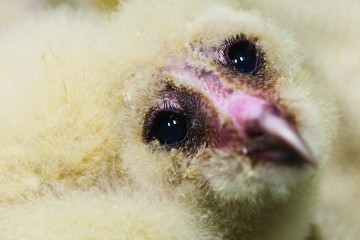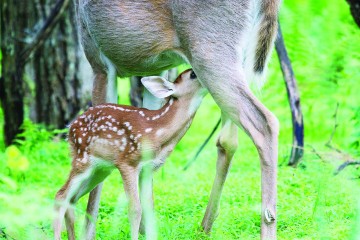Chesapeake Summer
The dogwood and redbud trees are now in their full green-leaf splendor, and another school year will be soon coming to a close. In your neighborhood the smell of charcoal permeates the evening air and the songbirds are singing. Spring is transferring into summer. From marsh to forest, Chesapeake Country invites you to experience a new season.
Perhaps in the marsh you heard a both repetitive and cacophonous cack cack cack over and over and over? That, dear reader, is the call of the clapper rail. The males of the secretive species emerge in late spring and early summer from the dense cover of marsh grasses to woo females. Because these birds rarely fly, you must follow the blaring call and scan the grasses in hopes of catching a glimpse.

In the woodlands look below to the forest floor. Underneath a semi-shady spot you may find the striking pink lady’s slipper. This orchid is so exquisite andbeloved that many enthusiasts spend weeks searching for them during their short blooming season. Native American tribes called the orchid the moccasin flower because of the resemblance to the shoe. They are slow to propagate, so do not pick these treasures but leave them to be discovered by others.
Look above as you may find a fledging owl chick staring back at you. Unfamiliar with the bipedal figure now in front of it, the owl’s gaze never leaves you. Some of the species you should look out for include the great horned, barred, eastern screech and barn owl.
As you turn the corner on the trail, you may see a red-backed salamander scurrying along leaf litter. Suddenly, in the corner of your eye, something, a small spotted quadruped, drops fleetingly to the ground. Where did it go?

Then an adult doe takes off through the forest. You inspect the ground and peak through the grass and ferns. Then you see it, one of the season’s most precious finds: an hours-old white-tailed deer fawn. Curled up helplessly, it calls to your heart. But fear not: The fawn is fine, and doing what it is supposed to do.
Our state’s most ubiquitous large mammal, the white-tailed deer is a study in contradictions. It is at home in both the wilderness and suburbia; it is both common and elusive; understood yet mysterious.
This time of year, the story is all about the babies. Deer fawns are born from late May into June. Of course the forest and marshes are both excellent locations, but so is agricultural land and even your neighborhood. If there is ample covering and shelter for the fawn to hide, there’s a good chance one may be concealed there.
Before a doe gives birth, she will seek a secluded location to avoid predators. She will give birth to one, sometimes two, or very rarely three, fawns. They typically weigh between four and eight pounds at birth and within a few hours will be up walking. At this point, the doe will more than likely move her babies to another secure location. Except for nursing, the fawn will stay concealed for the first few weeks of its life. Mother is so often away that fawns may be embedded over 90 percent of their first few weeks of life. It is safest for the fawn that no attention is brought to it.

To enhance their survival, white-tailed deer fawns are born with some useful adaptations. One reason fawns are encountered by their lonesome is that they are born odorless. It would be dangerous for the doe to leave her scent on the fawn, which could lure predators to the area. Thus she leaves the fawn in hiding. Their coats are reddish-tan colored with hundreds of white spots to maximize camouflage. Additionally a young fawn’s heart rate lowers when embedded in its hiding place; if it detects danger, it remains motionless, even when touched. Typically fawns are quiet but will make a bleating call if in distress, triggering the mother to return.
Within three to four weeks, fawns will be able to outrun most predators. By October, the fawn will be losing its spots and growing its winter coat.
Every year people with good intentions try to intervene and rescue a helpless fawn encountered in the woods. Touching a fawn is never a good idea because you are introducing your scent onto its coat.
The best thing for you to do is to leave it alone as its mother is nearby and will be returning. Only if a fawn is left alone for more than eight hours or appears to be sick should a wildlife rehabilitator be called.
After all, you wouldn’t want somebody touching you if you were resting.
